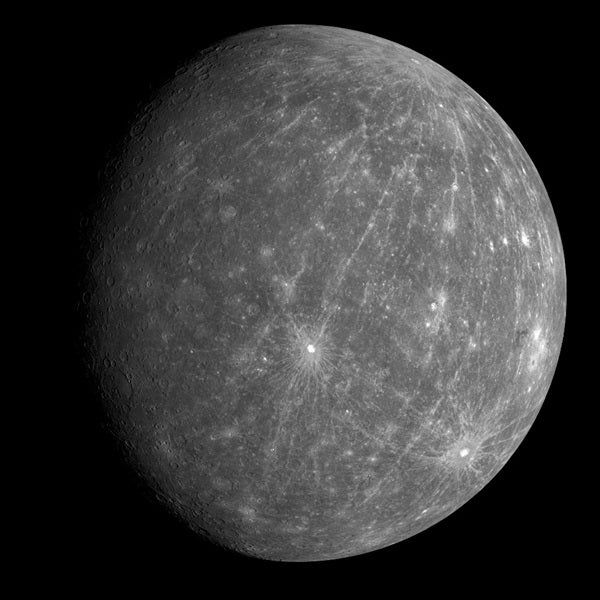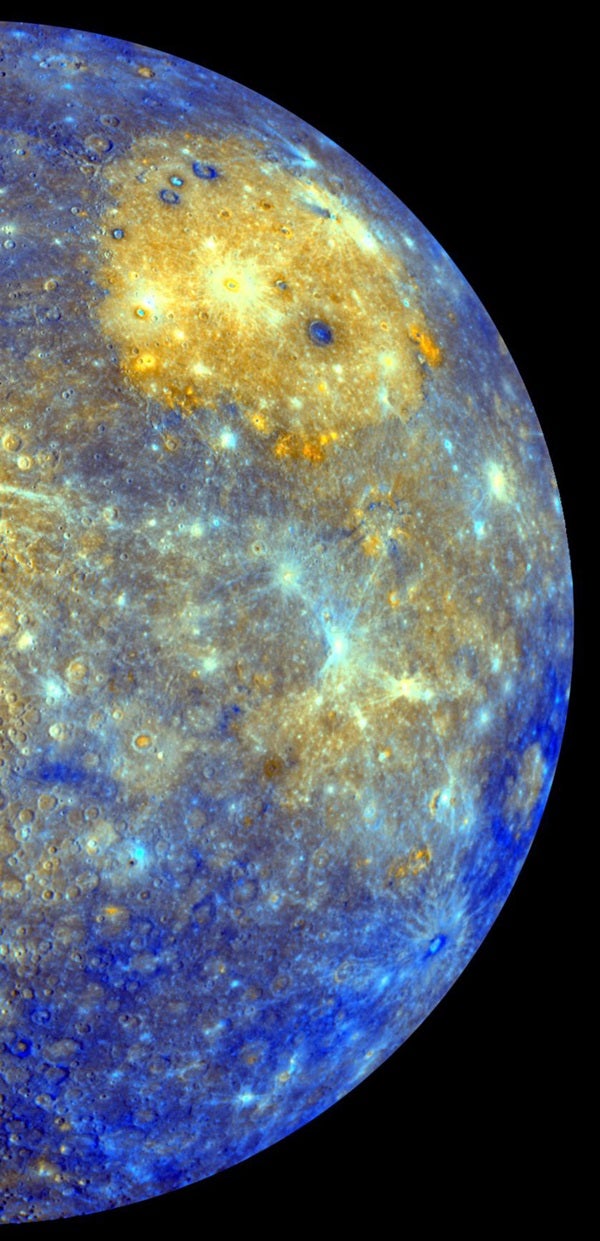Welcome to “Tour the solar system.” In this series, we give you an overview of the objects in the solar system. This video focuses on Mercury, the planet closest to the Sun.
Observers have known about Mercury’s existence since antiquity. It’s one of the five planets visible to the naked eye, along with Venus, Mars, Jupiter, and Saturn. Named after the swift Roman god of trade, Mercury takes just 88 Earth days to orbit the Sun. However, its day (from one sunrise to the next) is double that — it’s 176 Earth days. So Mercury’s day is two of its years.
This innermost planet is also the smallest. It’s about 38 percent as wide as Earth and contains about 5.5 percent of our planet’s mass. Mercury is the second densest — right behind Earth.
Just like the other terrestrial planets, Mercury has a rocky composition. Its core makes up more than 40 percent of its mass. Astronomers think the reason for the core’s high mass is because it is mostly iron. Compare that to Earth, whose core is only about 16 percent of its total mass.
You might think that given Mercury’s distance from the Sun (just about 38 percent of Earth’s), it would always be boiling hot. Mercury has virtually no atmosphere, so while the side facing the Sun is a scorching 800° Fahrenheit (430° Celsius), the planet’s dark side can drop to -300° Fahrenheit (-180° Celsius).
Oddly, this inner planet also has a small magnetic field. It’s the only other terrestrial planet — besides Earth — with a global field. While scientists think the liquid magma moving around outside Earth’s solid core produces our planet’s magnetic field, they aren’t sure what causes that of Mercury. It would be surprising if Mercury had a molten core because it should have cooled billions of years ago. Some scientists think Mercury formed farther from the Sun and moved inward later in the solar system’s history.
This inner world’s proximity to the Sun makes it difficult to observe and study. The Mariner 10 spacecraft flew past Mercury three times in 1974 and 1975, but it surveyed only about 45 percent of the planet’s surface. It took 33 years for another mission to visit the world. MESSENGER (which stands for MErcury Surface, Space ENvironment, GEochemistry, and Ranging) flew past the planet in January 2008, October 2008, and September 2009. The craft will settle into a highly elliptical orbit around Mercury in March 2011.
While there, MESSENGER will investigate Mercury’s surface, which shares a likeness to our Moon’s. Craters cover the innermost planet. Sometimes you can trace rays emanating from an impact crater, such as in this image. The young crater near what looks like the planet’s edge (this is called the limb) is 68 miles (110 kilometers) in diameter.
MESSENGER has also shown evidence of volcanism on Mercury. The large crater in this image shows irregularly shaped, steep-sided pits on its floor. Astronomers believe such “pit-floor craters” formed from the collapse of magma chambers near the surface.
MESSENGER has helped fill in a lot of details about the innermost planet. Using 917 images from that mission and from Mariner 10’s three flybys, astronomers have now mapped 97.7 percent of Mercury’s surface. The only portions they’re missing are the planet’s poles.
Using radar, scientists have detected hints of ice in permanently shadowed regions on the planet’s poles. How could ice exist on a planet so close to the Sun? Well, whereas Earth’s axis tilts about 23.5 degrees to the ecliptic plane, Mercury’s axis is essentially straight up and down. So the Sun never shines down onto the innermost planet’s poles, and the bottom of craters at the north and south poles remain shadowed (and cold).
Whether water ice exists at Mercury’s poles and whether the planet has a liquid core are questions MESSENGER will work to answer when it enters into orbit in 2011. We’ll post a science update after the mission team releases its findings, so make sure to check back later that year.
I hope this overview taught you a bit more about the planet Mercury. Astronomy‘s editors will continue our tour of the solar system in upcoming videos. And make sure to check out issues of Astronomy magazine, which often include articles and news about objects in our solar system.











